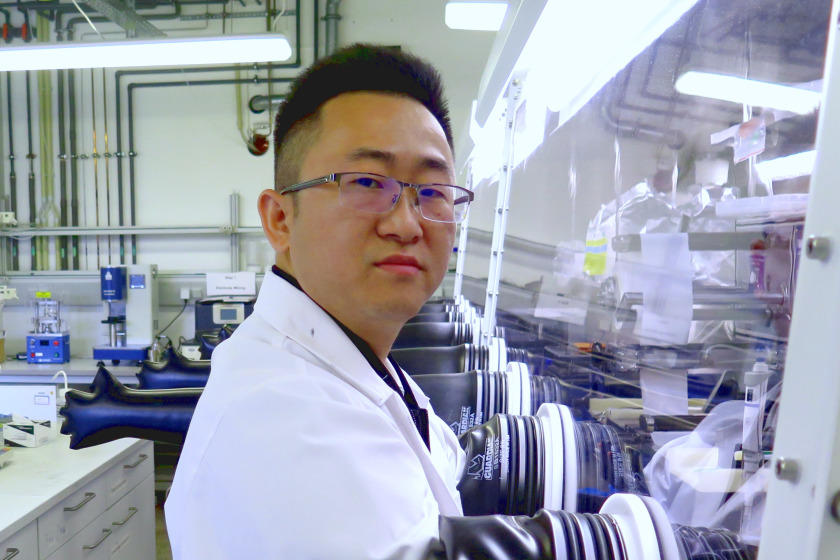Humboldt Fellow joins HZB for battery research

Dr. Wenxi Wang specialises in the design of organic electrodes for lithium-sulfur and zinc-ion batteries and investigates interactions between ions and active materials. © arö/HZB
Dr. Wenxi Wang is working in the team of Prof. Yan Lu as Humboldt Foundation postdoctoral fellow. He studied at the Southern University of Science and Technology in Shenzhen, China, and completed his doctorate at the King Abdullah University of Science and Technology in Saudi Arabia. He specialises in the precise design of organic electrodes for lithium-sulfur and zinc-ion batteries and the investigation of the interactions between ions and active materials.
"At Helmholtz-Zentrum Berlin I find excellent conditions to deepen my research," says Wenxi Wang. Prof. Yan Lu's group has extensive experience in the synthesis and characterisation of novel electrode materials and state-of-the-art infrastructures for battery research. In addition, the X-ray source BESSY II at HZB offers a variety of spectroscopic methods to analyse electrochemical reactions in real time.
Lithium-sulfur (Li-S) batteries are considered one of the most interesting technologies to replace lithium-ion batteries due to their extremely high energy density and cheap starting materials. However, their performance still falls far short of expectations due, in part due to polysulfide intermediates that form during charging cycles. Porous host materials can trap such polysulfides, improving the energy density and lifetime of Li-S batteries. "My research project focuses on the precise design of organic-based host materials with suitable pore sizes and functional groups (Covalent Organic Frameworks, COF) to enable high-performance Li-S batteries and deepen our understanding of their mechanisms," says Wang.
arö
-
A simpler way to inorganic perovskite solar cells
Inorganic perovskite solar cells made of CsPbI3 are stable over the long term and achieve good efficiencies. A team led by Prof. Antonio Abate has now analysed surfaces and interfaces of CsPbI3 films, produced under different conditions, at BESSY II. The results show that annealing in ambient air does not have an adverse effect on the optoelectronic properties of the semiconductor film, but actually results in fewer defects. This could further simplify the mass production of inorganic perovskite solar cells.
-
BESSY II: How pulsed charging enhances the service time of batteries
An improved charging protocol might help lithium-ion batteries to last much longer. Charging with a high-frequency pulsed current reduces ageing effects, an international team demonstrated. The study was led by Philipp Adelhelm (HZB and Humboldt University) in collaboration with teams from the Technical University of Berlin and Aalborg University in Denmark. Experiments at the X-ray source BESSY II were particularly revealing.
-
Fuel Cells: Oxidation processes of phosphoric acid revealed by tender X-rays
The interactions between phosphoric acid and the platinum catalyst in high-temperature PEM fuel cells are more complex than previously assumed. Experiments at BESSY II with tender X-rays have decoded the multiple oxidation processes at the platinum-electrolyte interface. The results indicate that variations in humidity can influence some of these processes in order to increase the lifetime and efficiency of fuel cells.
